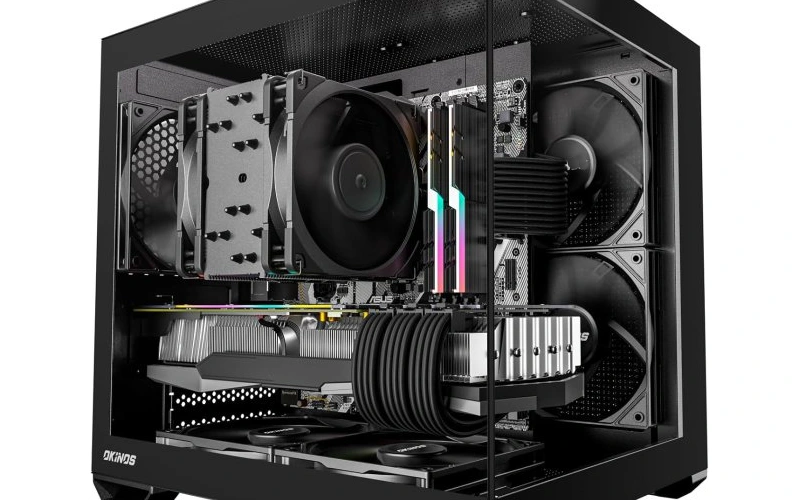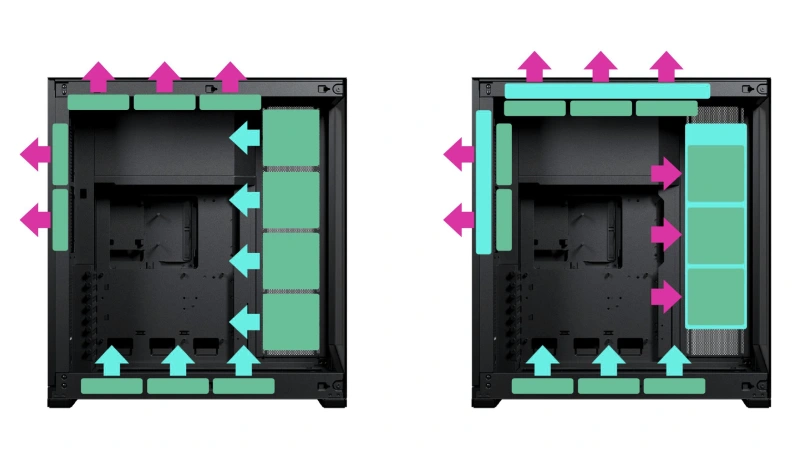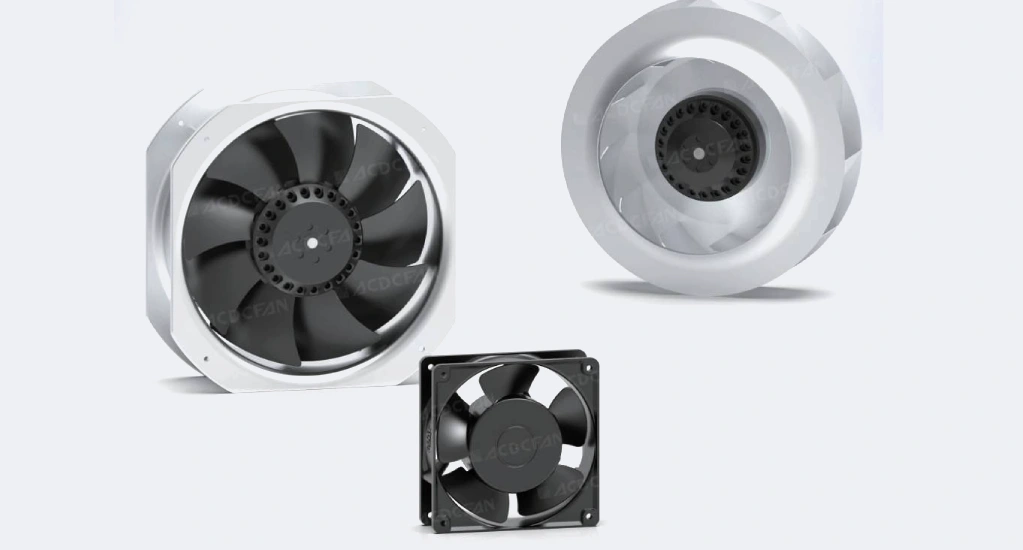In the vast world of electrical wiring, choosing the right connector is crucial for safety and performance. Among the myriad of options, the ring terminal stands out as a fundamental component, revered for its robust and reliable connections. But what exactly is a ring terminal, and how does its seemingly simple design ensure such unwavering conductivity?
This blog post will demystify the ring terminal, breaking down its essential components and explaining the principles behind its secure operation. We’ll explore its diverse applications across various industries and guide you through how these small but mighty connectors play a vital role in ensuring stable and efficient electrical systems.
What is a Ring Terminal?
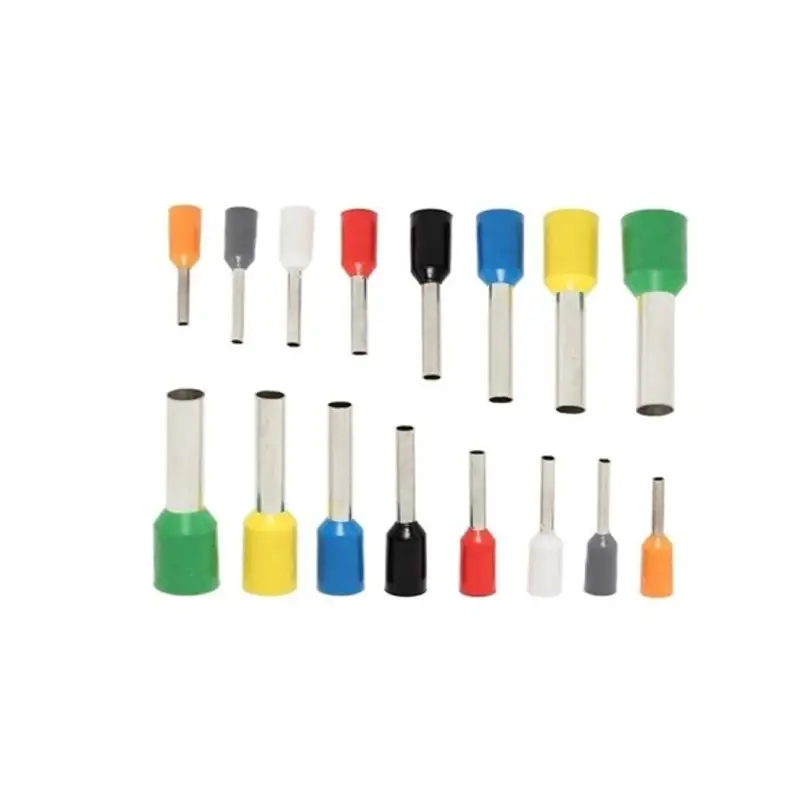
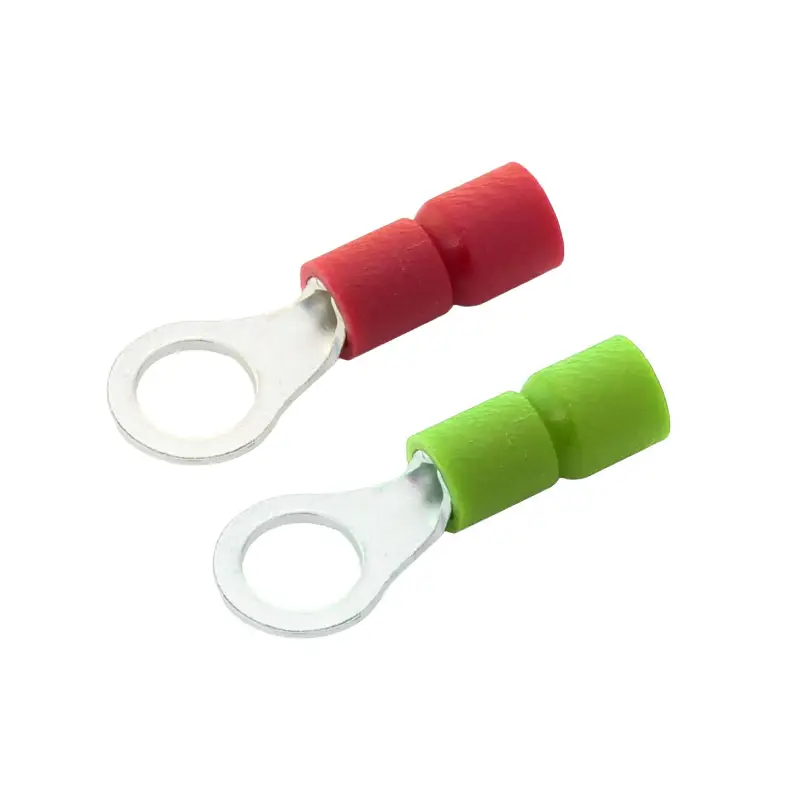
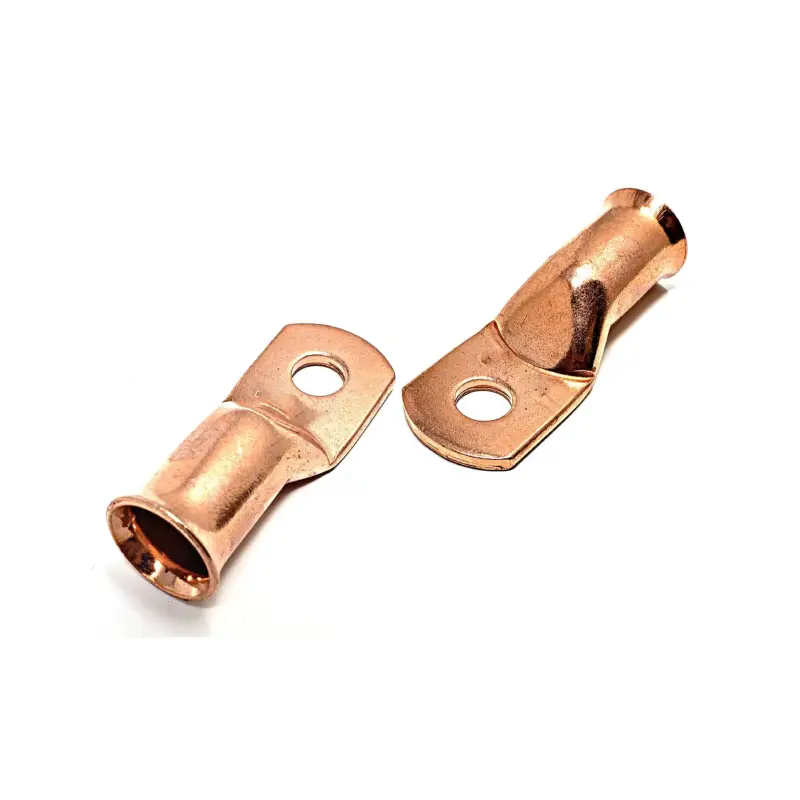
A ring terminal is an electrical connector with a circular “ring” at one end and a barrel at the other. The ring secures under a screw or stud for a highly reliable mechanical and electrical connection. The barrel is crimped onto a wire, ensuring excellent conductivity and preventing wire fraying, making it ideal for robust applications.
What Are Ring Terminals Used For?
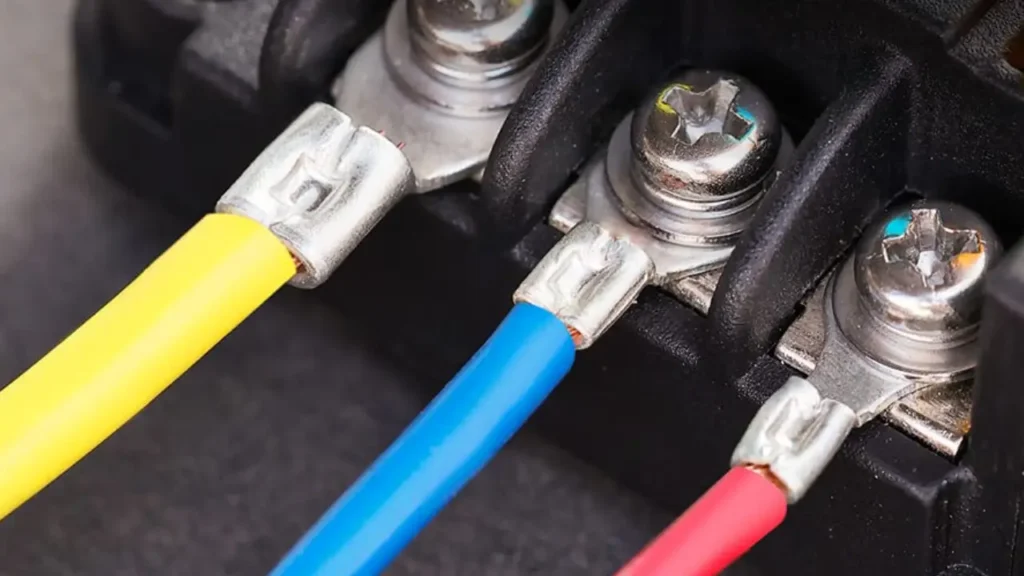
Ring terminals are fundamental components in electrical wiring, primarily used to establish a secure and reliable connection between a wire and a power source, ground point, or other electrical components. Their design, featuring a closed loop, ensures that the connection remains stable even under vibration or stress, unlike spade terminals which can accidentally disconnect. This makes them ideal for applications where a robust and permanent electrical connection is critical, preventing intermittent power, signal loss, and potential hazards from loose wiring.
Their widespread application stems from their ability to provide a durable and electrically sound connection in demanding environments. This reliability is crucial across various industries and everyday products.
- Automotive Applications: Widely used for connecting battery cables, grounding wires, and various electrical accessories in vehicles where vibrations are common.
- Industrial Machinery: Essential for power and control wiring in factories, linking motors, sensors, and control panels to power distribution systems.
- Marine Environments: Their secure connection is vital in boats and ships, which are exposed to constant motion and often harsh, corrosive conditions.
- Home Appliances and HVAC: Found in washing machines, refrigerators, air conditioners, and furnaces, ensuring reliable power delivery to critical components.
- Renewable Energy Systems: Used in solar panel installations and wind turbines to create durable connections that can withstand outdoor elements and continuous operation.
Types of Ring Terminals
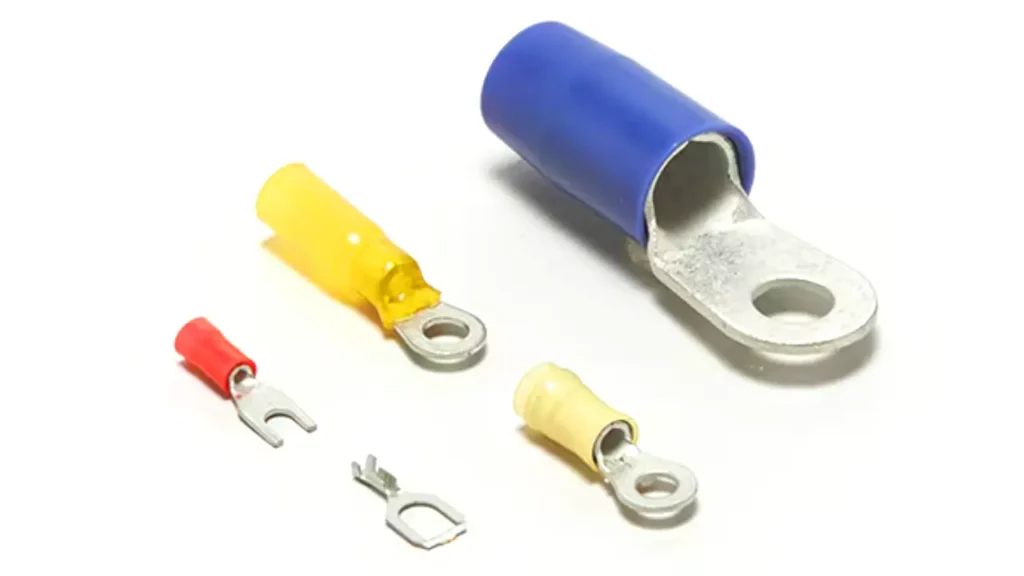
Ring terminals are diverse, offering various types tailored for specific electrical needs. These variations primarily concern insulation, material, and barrel construction, each playing a crucial role in the terminal’s performance, safety, and suitability for different environments and applications.
Insulated Ring Terminals
These terminals feature a pre-attached insulating sleeve, typically made from PVC, nylon, or heat-shrink material, that covers the crimped wire barrel. This insulation provides crucial protection against short circuits, abrasion, and environmental elements like moisture and dust. Often color-coded by wire gauge, they simplify identification and ensure proper wire-to-terminal matching, enhancing both safety and installation efficiency.
Non-Insulated Ring Terminals
As the name suggests, these terminals do not come with a factory-applied insulating sleeve. They are typically made from bare copper or tin-plated copper and are chosen for applications where space is extremely limited, high temperatures prevent the use of standard insulation, or when custom insulation (like heat-shrink tubing) will be applied post-crimping. Their design allows for maximum conductivity without added bulk.
Copper Ring Terminals
These are among the most common types, manufactured from high-purity electrolytic copper. Copper’s excellent electrical conductivity ensures minimal resistance and efficient power transfer, while its inherent corrosion resistance contributes to long-term reliability. Copper ring terminals are versatile and widely used across general electrical, automotive, and industrial applications where robust and highly conductive connections are essential.
Brass Ring Terminals
While less common for primary power connections than copper, brass ring terminals offer a cost-effective alternative in certain applications. Brass provides good conductivity and workability, making it suitable for specific low-current or signal connections. Their properties can also be beneficial where a particular hardness or corrosion resistance profile is desired, though generally, copper is preferred for higher current capacity.
Heavy-Duty Ring Terminals
Designed for larger wire gauges and higher current demands, heavy-duty ring terminals are more robust in construction. They are typically made from thicker copper or specialized alloys and often require hydraulic crimping tools for proper installation. These terminals are crucial in power distribution, industrial machinery, and other demanding environments where substantial current flow and extreme durability are required.
Brazed Seam Ring Terminals
This type refers to the construction of the terminal’s wire barrel. In a brazed seam terminal, the seam where the metal is rolled to form the barrel is brazed (joined with a filler metal), creating a stronger, more continuous electrical path compared to a simple butt or overlap seam. This construction enhances both mechanical strength and electrical performance, reducing potential points of failure and improving conductivity.
How to Crimp Ring Terminals?
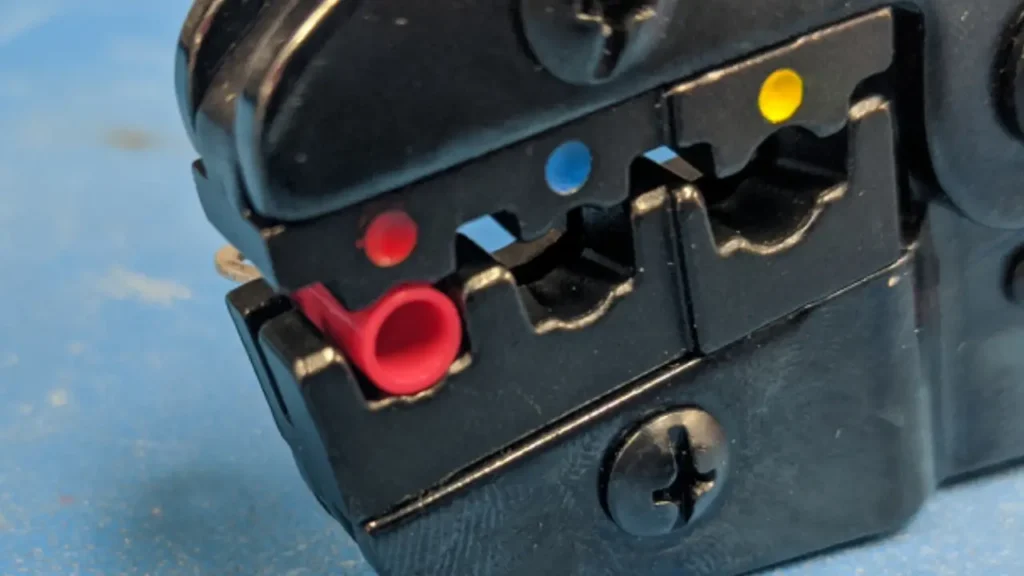
Achieving a flawless crimp on a ring terminal is vital for ensuring a durable and efficient electrical connection. This precise process guarantees optimal current flow and prevents future wiring headaches. Mastering these steps leads to professional-grade results every time you connect.
Step 1: Accurate Wire Stripping
The initial step demands precise wire preparation. Carefully strip away the insulation from your wire, ensuring the bare conductor length perfectly matches the metal barrel of the ring terminal. This critical measurement prevents exposed wire while maximizing contact, which is fundamental for a robust and safe electrical bond.
Step 2: Optimal Wire Insertion
With the insulation expertly removed, gently guide all individual wire strands fully into the terminal’s barrel. It is crucial that no stray wires escape the barrel, as every strand contributes to conductivity. A complete and tidy insertion sets the stage for a strong, reliable, and efficient connection, preventing any future electrical issues.
Step 3: The Crimp Application
Now, select the appropriate crimping tool for your specific terminal and wire gauge. Apply firm, controlled pressure to the terminal’s barrel, ensuring it securely deforms around the wire. A correctly executed crimp creates a cold weld, establishing both a powerful mechanical grip and an exceptional electrical pathway, essential for performance.
Step 4: Final Connection Verification
After crimping, perform a swift, gentle tug on the wire to confirm its steadfast attachment to the terminal. Visually inspect the crimped area for uniform compression and confirm there are no loose or damaged strands. This final quality check ensures the integrity of your connection, guaranteeing long-term reliability and safety for your electrical circuit.
How to Install Ring Terminals?
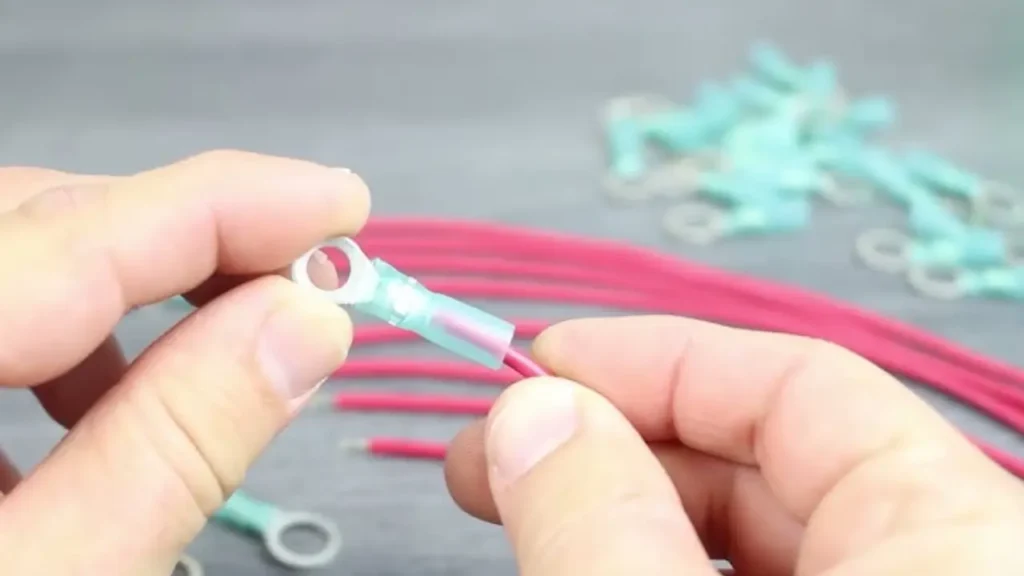
Properly installing ring terminals is paramount for ensuring safe, reliable, and long-lasting electrical connections. A well-executed crimp and secure mounting prevent issues like power loss, overheating, and potential hazards. Follow these steps meticulously for optimal results.
Step 1: Prepare the Conductor
Begin by accurately stripping the wire’s insulation. The bare conductor length should precisely match the barrel depth of your chosen ring terminal. Ensure the insulation cut is clean and straight, and that no individual wire strands are nicked or severed during the stripping process, preserving the wire’s integrity.
Step 2: Insert Wire into Terminal
Carefully guide all the exposed wire strands into the metal barrel of the ring terminal. Verify that every strand is fully inserted and that no copper strands are left outside the barrel. This complete insertion maximizes surface contact, which is vital for achieving optimal electrical conductivity and a strong crimp.
Step 3: Perform the Crimp
Using a high-quality crimping tool specifically matched to the terminal and wire gauge, apply firm, even pressure to the terminal’s barrel. The crimper should deform the barrel around the wire, creating a secure mechanical and electrical bond. A correctly formed crimp will be tight and uniform, without sharp edges.
Step 4: Verify Connection Integrity
After crimping, perform a gentle pull test on the wire. The wire should be firmly seated within the terminal, indicating a robust crimp. Visually inspect the crimped area for proper compression—it should appear consistent and not over-crimped or under-crimped. This final check confirms the reliability of your installation.
Step 5: Secure the Terminal
Finally, place the ring terminal onto the desired stud or screw and fasten it securely using a nut or bolt. Ensure the connection is snug but avoid over-tightening, which could damage the terminal or the stud. A properly torqued connection ensures excellent electrical contact and prevents loosening from vibration.
Spade vs Ring Terminal
When it comes to terminating electrical wires, both spade and ring terminals are common choices, but they are designed for different priorities in connectivity. While both securely attach a wire to a screw or stud, their distinct shapes lead to significant differences in installation, security, and ideal applications.
Connection Security
Ring terminals provide a superior level of connection security. Because their closed-loop design requires the securing screw or bolt to be fully removed for installation or removal, they are highly resistant to accidental disconnection due to vibration, shock, or tugging. This makes them ideal for critical applications where an uninterrupted connection is paramount.
Ease of Installation/Removal
Spade terminals, also known as fork terminals, excel in situations requiring quick installation or frequent disconnections. Their U-shaped opening allows them to be slid under a loosened screw head without full removal. This feature significantly reduces installation and maintenance time, making them convenient for test setups or components that may need regular servicing.
Vibration Resistance
Due to their fully enclosed connection point, ring terminals offer much greater resistance to vibrations compared to spade terminals. In environments with constant movement or mechanical stress, such as in vehicles, industrial machinery, or marine applications, the closed loop of a ring terminal prevents it from jiggling loose from the stud, maintaining electrical contact.
Space Constraints
In some tight spaces, the open-ended design of a spade terminal can be advantageous. It allows for easier maneuvering and placement under a screw without the need to completely clear the stud. Ring terminals, while secure, sometimes require more clearance to fully slide over the stud, which can be a consideration in compact enclosures.
Application Suitability
The choice between spade and ring terminals often comes down to the specific application’s demands. Ring terminals are preferred for permanent, high-security connections, especially in high-vibration or mission-critical systems. Spade terminals are best suited for applications where connections might need frequent inspection, testing, or swapping, or where quick installation is a priority.
Why Choose Our Ring Terminals?
Choosing our ring terminals means opting for unparalleled reliability and superior performance in your electrical connections. We meticulously manufacture our terminals from high-grade, pure copper, ensuring exceptional electrical conductivity and minimal resistance. This commitment to premium materials translates directly into efficient power transfer, reduced energy loss, and an extended lifespan for your electrical systems. You can confidently rely on our terminals to provide a consistently strong, stable, and enduring connection, even in the most demanding environments.
Our ring terminals are engineered with precision and designed to offer significant advantages that enhance both safety and ease of use.
- Exceptional Security: The closed-loop design ensures a robust, vibration-proof connection that won’t accidentally disconnect, crucial for critical applications.
- Optimal Conductivity: Made from high-purity copper, our terminals maximize current flow and minimize voltage drop, improving system efficiency.
- Corrosion Resistance: Many of our terminals feature advanced plating (e.g., tin) to resist oxidation and corrosion, ensuring long-term reliability in harsh conditions.
- Broad Compatibility: We offer a wide range of sizes and types to perfectly match various wire gauges and stud sizes, simplifying your selection process.
- Easy Installation: Designed for reliable crimping, our terminals facilitate straightforward and secure installations, saving you time and effort.
By selecting our ring terminals, you are not just purchasing a component; you are investing in peace of mind, knowing your electrical connections are secure, efficient, and built to withstand the test of time.
Conclusion
Understanding the humble yet critical ring terminal is key to achieving reliable electrical connections. From its simple, circular design to its secure crimped connection, it consistently delivers a stable and conductive link, essential for preventing faults and ensuring system longevity across countless applications.
By now, you should have a clear grasp of what a ring terminal is, how it functions to provide a steadfast connection, and why its proper selection and installation are paramount. Its role in maintaining electrical integrity cannot be overstated, making it an indispensable component in both simple and complex wiring projects.
For all your electrical needs, choose quality and reliability. When you require wholesale ring terminals, look no further than Linkwell Electrics. We ensure premium products that guarantee optimal performance and safety for your every project.

